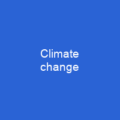
Why Does the UNFCCC Matter?
The UNFCCC’s primary mission is to limit greenhouse gas emissions and stabilize their concentrations in the atmosphere. This might sound like a daunting task, but it’s crucial if we want to prevent “dangerous anthropogenic interference with the climate system.” Think of it as a global effort to keep our planet from overheating.
Key Players and Their Roles
The UNFCCC has 198 parties as of 2022, each playing a vital role. Annex I countries, like developed nations, are expected to take the lead in addressing climate change. Meanwhile, developing countries focus on economic development and poverty eradication while still contributing to global efforts.
The Conference of the Parties (COP)
At the heart of the UNFCCC is the COP, which meets annually to discuss progress and negotiate legally binding obligations for developed countries. The first COP was held in 1995 in Berlin, leading to the Kyoto Protocol, a significant milestone in global climate action.
The Paris Agreement: A New Chapter
While the UNFCCC laid the groundwork, it’s the Paris Agreement that has brought nations closer together. This agreement aims to limit global temperature rise to below 2°C above pre-Industrial Revolution levels. It’s like setting a new thermostat for our planet, but with more ambitious goals.
Key Agreements and Milestones
The Kyoto Protocol, the Paris Agreement, and various other commitments have shaped the landscape of climate action. The Bali Action Plan, Copenhagen Accord, and Cancún agreements are just some of the pivotal moments that have brought nations closer to a common goal.
Education and Public Awareness: The Power of Knowledge
Action for Climate Empowerment (ACE) focuses on six priority areas: education, training, public awareness, public participation, public access to information, and international cooperation. These initiatives aim to make climate change a global conversation, ensuring everyone has the knowledge to contribute.
Challenges and Criticisms
The UNFCCC hasn’t been without its challenges. Critics argue that it’s slow-paced and lacks progress in reducing greenhouse gas emissions. The Kyoto Protocol faced criticism for not achieving effective emission reduction policies and excluding developing countries. These criticisms highlight the need for continuous improvement and innovation.
Leadership Changes and Future Directions
The UNFCCC has seen several leadership changes, with Christiana Figueres, Patricia Espinosa, Ibrahim Thiaw, and Simon Stiell serving as Executive Secretary. Each leader brings a unique perspective to the table, driving the organization towards new horizons.
Conclusion
The United Nations Framework Convention on Climate Change (UNFCCC) is more than just an international treaty; it’s a beacon of hope for our planet. Despite its challenges, it continues to unite nations in the fight against climate change. As we move forward, let us remember that every small step counts in this global journey towards sustainability.
You want to know more about United Nations Framework Convention on Climate Change?
This page is based on the article United Nations Framework Convention on Climate Change published in Wikipedia (retrieved on November 24, 2024) and was automatically summarized using artificial intelligence.





